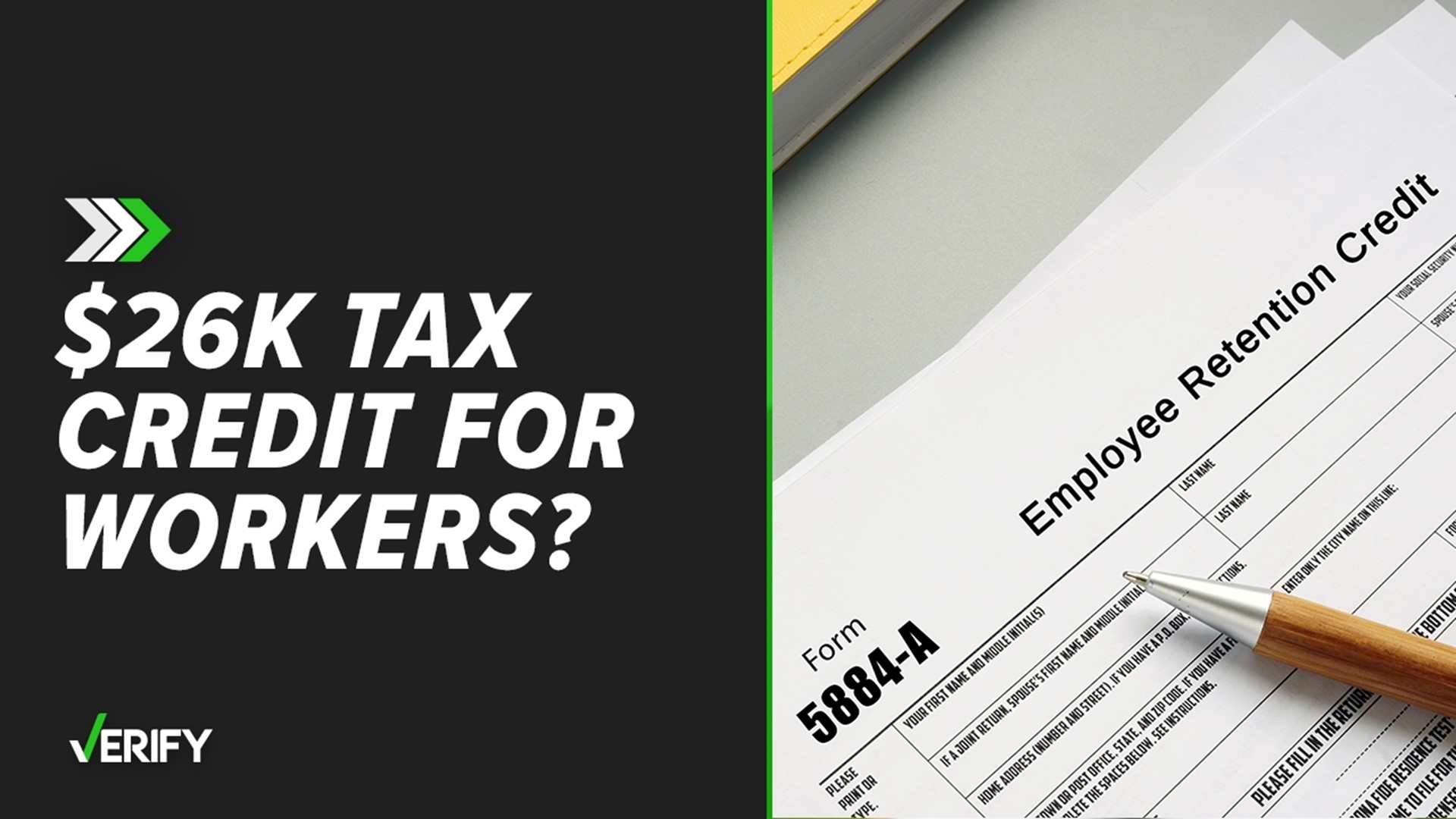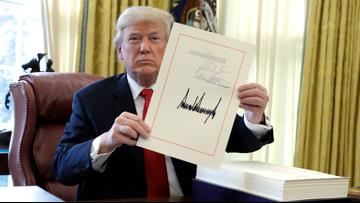If you see promises of big money shared on social media, it’s reasonable to be skeptical.
That’s what happened to VERIFY reader Tim, who saw Facebook posts – including this one – claiming that employees who were forced to work through the COVID-19 pandemic may be eligible for up to $26,000 through the Employee Retention Credit.
Tim asked if individual workers qualify for any of that money or if it’s only available to employers.
THE QUESTION
Are individuals who worked through the pandemic eligible for up to $26,000 through the Employee Retention Credit?
THE SOURCES
- The Internal Revenue Service (IRS)
- CARES Act
- Mark Steber, chief tax information officer at Jackson Hewitt Tax Service
- Ogletree Deakins, an employment and labor law firm
THE ANSWER
No, individuals who worked through the pandemic aren’t eligible for up to $26,000 through the Employee Retention Credit.
WHAT WE FOUND
The Employee Retention Credit (ERC) is a refundable tax credit that was designed to encourage businesses to keep employees on their payroll during the COVID-19 pandemic. It was established by the CARES Act, which Congress passed shortly after the onset of the pandemic in March 2020.
Only employers qualify for the credit, the IRS and Mark Steber, chief tax information officer at Jackson Hewitt, confirmed to VERIFY. Individual workers do not qualify.
The CARES Act text also specifies that the credit is for “employers subject to closure due to COVID-19.”
That means people who worked through the pandemic aren’t eligible for up to $26,000 through the tax credit, as some social media posts falsely claim.
A spokesperson for the IRS told VERIFY that “there are a number of widely promoted scams falsely claiming that workers can claim this credit.” Facebook has labeled the post that Tim sent to VERIFY as “false information.”
Some scammers have also targeted employers, advising them to claim the ERC when they may not qualify for it, which the IRS warned about in a press release in October 2022.
More from VERIFY: Yes, scammers do send fake checks in the mail
The ERC is for businesses that continued to pay employees while shut down due to the pandemic or had “significant declines in gross receipts” from March 13, 2020 to Dec. 31, 2021, the IRS says on its website.
Employers were eligible for the ERC if they:
- Sustained a full or partial suspension of operations limiting commerce, travel or group meetings due to COVID-19 and orders from an appropriate governmental authority; or
- Experienced a significant decline in gross receipts during 2020 or a decline in gross receipts during the first three quarters of 2021; or
- Qualified in the third or fourth quarters of 2021 as a recovery startup business.
Ogletree Deakins, an employment and labor law firm, explains that qualifying employers may be eligible for up to $5,000 per employee for 2020 and up to $21,000 per employee in 2021 for a total of $26,000.
Eligible employers can’t claim the ERC on wages that were reported as payroll costs when they obtained Paycheck Protection Program (PPP) loan forgiveness or those that were used to claim some other tax credits, the IRS says.
Businesses typically file payroll tax returns, which are also called employment tax returns, on a quarterly basis.
While many employers have already claimed the ERC on these forms, those who overlooked it can file a corrected payroll tax return form for the eligible quarter, according to the IRS.
Apart from filing a corrected form, the ERC has ended and cannot be claimed on a payroll tax return for any part of 2022.












